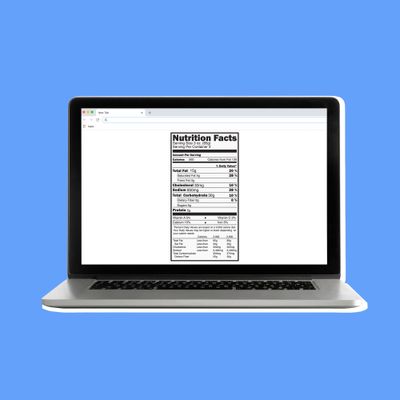
Recently an essay on Medium suggested an annoying but kind of amazing concept: “digital nutrition.” Along with the generally agreed-upon five pillars of human health — sleep, diet, work, interpersonal relationships, and exercise — a new field has emerged, the authors argue: our digital diet. The things we consume online. And since we’re “feeding” our brains digital content for 12 hours a day, on average, we’re essentially consuming digital “food” more than we sleep or eat anyway. And so our digital diets warrant similar monitoring, they say. As they put it:
Over the next several years, we anticipate the emergence of a new labeling system for digital content — one that goes further than today’s film and TV ratings and more closely resembles nutritional information on food packaging.
They suggest that the current way we’re consuming digital content — mindlessly, constantly — is contributing to an overall sense of depression and unease, akin to what might happen to our bodies after years of eating junk food. The authors cite a 2017 study naming depression as the leading cause of disability around the world, and they attribute the climbing rates of mental illness, in part, to our digital diets. (Separately, a recent study published in the Journal of Social and Clinical Psychology found that limiting daily social media use to 30 minutes, for instance, “decreases loneliness and depression.”)
The food/internet parallels were fun to think about. Do I have a healthy digital diet? Is my “breakfast” routine better than my friends’? Would Facebook be like gluten, then — something lots of people are taking pleasure in “quitting,” but then later kind of creep back to?
And what would a nutritional breakdown of the Cut look like: 22 percent humor, 30 percent useful, 40 percent protein, and 8 percent carbs? Who and how would we decide these things? Also I’d probably want to mainline the most trashy sites, once they’d been identified, even if I had no interest beforehand.
The essay’s main author is Michael Phillips Moskowitz, who used to run curation at eBay, and its second author is Hans Ringertz, a radiologist and member of the Nobel Assembly for Physiology and Medicine, and a former chairman of the Nobel Assembly at the Karolinska Institute. They make sort of an odd team, from a distance at least — and they’ve also developed a strange app they’ve trademarked under the Digital Nutrition name.
Over the phone, Moskowitz told me that a digital nutrition label for the Cut, for instance, might look less like a pie chart breaking down its good and bad qualities, and more like a cluster of hovering, clickable symbols in the site’s corner (akin to how the SyFy channel’s logo remains in the corner of its viewers’ screens). A combination of icons (like hearts and suns) might represent the kind of content on any given page (does it energize, soothe, trigger dopamine?), but for now that would be it. No overall “NC-17” ratings, or at least not yet. A label wouldn’t be “a grade of good or bad,” he said. “We’re here to aid with transparency, not judge or punish.”
Fair enough, but what’s the fun in that?




